In this week’s installment of Ask the Expert, Drs.Samuel Taylor & Stephen J. O’Brien, discuss biceps tendinitis.
Popeye’s Problem…
Cartoons depicting Popeye’s bulging biceps after he guzzled down a can of spinach only told half the story. Unfortunately, our favorite sailor went on to develop intense pain in the front of his shoulders as the years passed and was diagnosed with “biceps tendinitis”. Interestingly, the medical term used to describe the deformity that occurs after a degenerated long head of the biceps tendon (LHBT) ruptures carries his namesake and is called a “Popeye Sign”.
Biceps come from Latin “bi” meaning “two” and “ceps” meaning “heads”, because this important muscle attaches to the front of the scapula by two different tendons (heads). The short head is the most important for function and enables 90% of power. While the LHBT is quite meager in comparison, it is a widely accepted source of pain in the shoulder.
Biceps tendinitis is a catchall term that describes pain related to the LHBT stemming from a wide array of different lesions. Our recent research efforts have helped expand our understanding of this important disease process. (1-6)
Does MRI always show biceps disease? No. Recently we compared MRI reports with surgical findings from a large group of patients undergoing shoulder surgery and found that, when present, lesions were often unrecognized by MRI. (5)
Does arthroscopy always show biceps disease? No. In our award winning study just published in Arthroscopy Journal, we showed that only 55% of the LHBT could actually be seen during routine shoulder surgery and that 45% of 277 patients with chronic biceps related pain had “hidden” lesions. (1-2)
Physical examination remains king? Dr. Stephen O’Brien devised a series of physical examination maneuvers called the 3-Pack that have been shown the most effective tool available for diagnosing biceps disease when present. (6)
What are nonsurgical treatment options? Biceps tendinitis is incredibly common, and fortunately the vast majority of people get better without needing surgery. Anti-inflammatory medications by mouth, changing your activities to avoid those things that produce pain and structured physical therapy are the most useful first line treatment.
What are surgical treatment options? In a small subset of patients surgery may provide the best opportunity for recovery of function and alleviation of pain. Treatment options include tenotomy (surgeon cuts the LHBT thereby relieving painful tension on the tendon) or tenodesis/transfer (surgeon cuts the LHBT and moves it to another location). (3-4)
- Taylor SA, Khair MM, Gulotta L, Dy CJ, Baret NJ, Newman AM, Pearle AD, O’Brien SJ. Standard Diagnostic Glenohumeral Arthroscopy Fails to Fully Evaluate the Biceps-Labrum Complex. Arthroscopy. 2014 Dec 10 [Epub ahead of print]. Arthroscopy 2015 Feb; 31(2):215-24.
- Taylor SA, Fabricant PD, Bansal M, Khair MM, McLawhorn A, DiCarlo E, Shorey M, O’Brien SJ. The Anatomy and Histology of the Bicipital Tunnel of the Shoulder. JSES. 2014 Nov 18 [Epub ahead of print].
- Taylor SA, Fabricant PD, Baret NJ, Newman AM, Sliva N, Shorey M, O’Brien SJ. Midterm Clinical Outcomes for Arthroscopic Subdeltoid Transfer of the Long Head of the Biceps Tendon to the Conjoint Tendon.Arthroscopy. 2014 Sep 17. [Epub ahead of print]
- Kelly AM, Drakos MC, Fealy S, Taylor SA, O’Brien SJ. Arthroscopic Release of the Long Head of the Biceps Tendon: Functional Outcome and Clinical Results. Am J Sports Med. 2005 Feb;33(2):208-213.
- Taylor SA, Newman AM, Baret NJ, Delos D, O’Brien SJ. MRI Fails to Fully Evaluate the Biceps-Labral Complex. [Manuscript Under Review: Arthroscopy 2015]
- O’Brien SJ, Newman AM, Taylor SA, Dawson C, Gallagher KA, Bowers A, Nguyen J, Baret N. The Accurate Diagnosis of Biceps-Labral Complex Lesions with MRI and “3-Pack” Physical Examination: A Retrospective Analysis with Prospective Validation. Orthopaedic Journal of Sports Medicine 2013 1: DOI: 10.1177/2325967113S00018.
Dr. Samuel Taylor, Sports Medicine Surgeon, has developed a unique understanding of the demands and anxieties faced by injured athletes at all levels. His clinical expertise includes minimally invasive and reconstructive techniques of the shoulder, elbow, and knee. Dr. Taylor currently serves as Associate Team Physician for the New York Giants and team physician for the Fire Department of New York (FDNY) semi-professional football team.
Dr. Stephen J. O’Brien is an Attending Orthopedic Surgeon at Hospital for Special Surgery, specializing in orthopedic surgery and sports medicine. Dr. O’Brien has also been actively involved in research throughout his career. He has authored 20 book chapters and 85 peer-reviewed or review articles. Currently, his research interests have focused on an algorithm he developed for the diagnosis and treatment of biceps-labral disorders.

